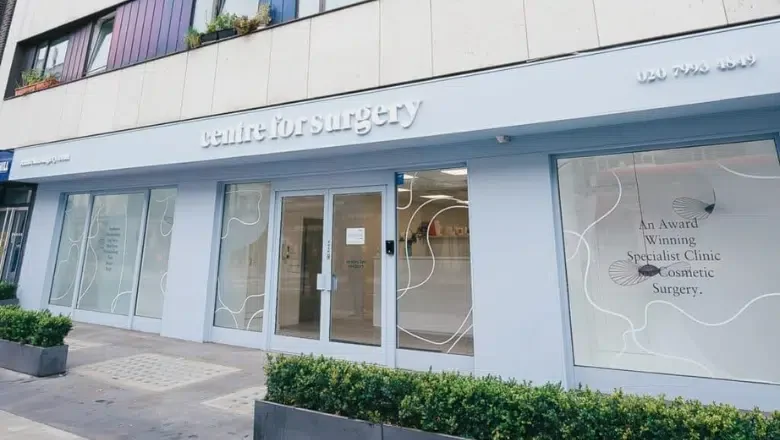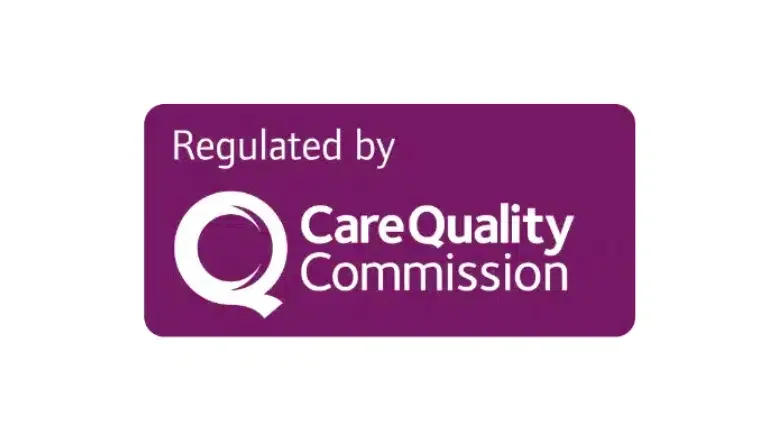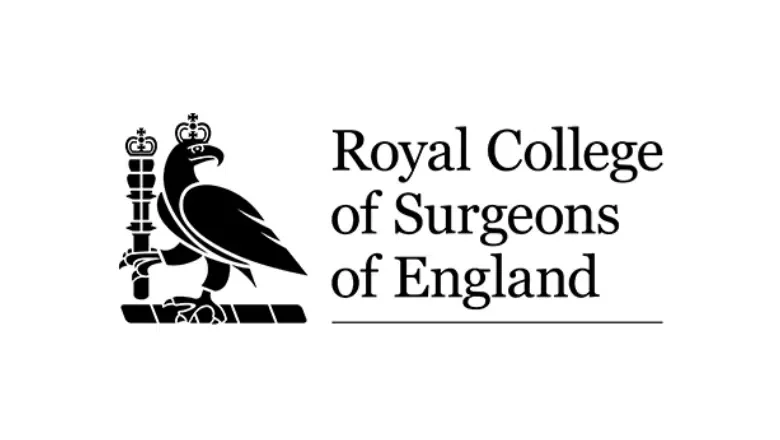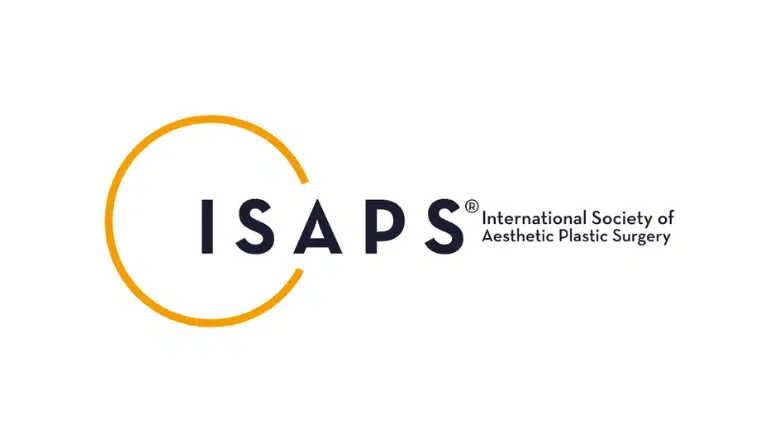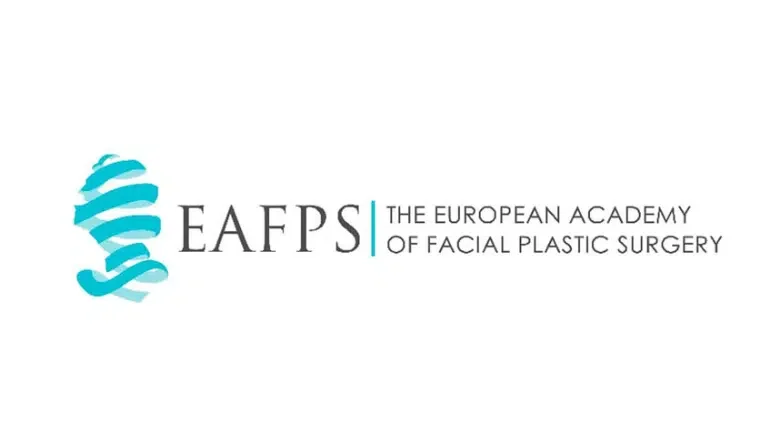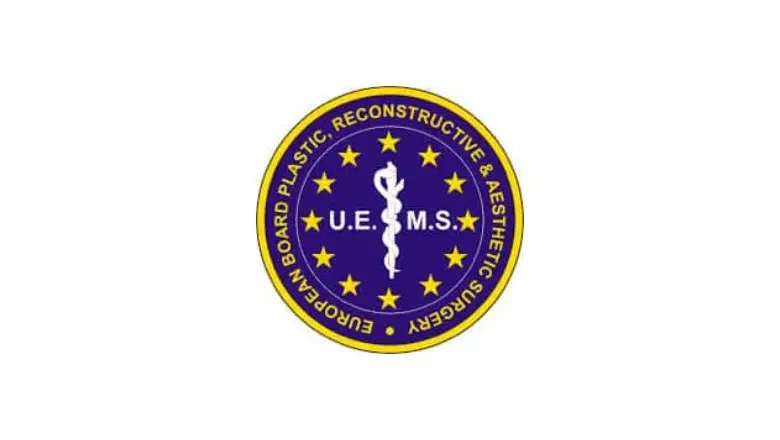Mini Facelift in London
In recent years, facial rejuvenation techniques have made significant advancements, with the goal of creating a refreshed and natural-looking appearance rather than an unnaturally tight or overdone look. Today, there is a wide range of facelift and facial rejuvenation options available, including traditional facelifts, neck lifts, mini facelifts, and non-surgical options. Mini facelifts are particularly suitable for younger patients who are not yet ready for a full facelift.
Centre for Surgery, a specialist plastic clinic based in London, is home to some of the leading experts in mini facelift surgery in the UK.
Mini-Facelift: Streamlined Procedure, Stunning Outcomes for Youthful or Age-Defying Patients
You’ve diligently maintained your skin, got ample sleep, exercised, and used moisturiser and daily facial cleansers. Yet, despite your efforts, your face continues to show signs of ageing, with wrinkles and jowls beginning to appear. If this resonates with you, rest assured you’re not alone.
RELATED: Mini Facelift Surgery – A Less Invasive Way to Achieve a Youthful Look
Regardless of how youthful you feel, the visible indicators of ageing will eventually emerge, making you appear older than you’d like. Wrinkles, fine lines, sagging skin, and sagging jowls that obscure your jaw and neckline are just a few of the facial characteristics that may become bothersome with age. So, how can you rejuvenate the appearance of your face and neck?
We provide a variety of anti-ageing treatments to help you eliminate wrinkles and sagging skin folds, resulting in a more youthful appearance. Dermal fillers and injectables are ideal for minor, short-term enhancements. However, facelift surgery is the top choice for those seeking more significant and enduring outcomes. Mini-facelifts serve as a less invasive alternative to traditional facelifts and are ideal for individuals experiencing mild signs of ageing, such as wrinkles, jowls, and slight skin sagging.
What is a mini-facelift?
A mini facelift or short scar facelift differs from a full or traditional facelift in several key aspects. The procedure is considered less invasive than a full facelift or rhytidectomy procedure with shorter incisions that are better hidden within natural skin folds, and this makes them less visible to other people. Mini facelift results can often match those achieved from a traditional facelift without the increased scarring, risks or downtime.
Compared with a full facelift, a mini facelift is designed to tighten loose and sagging skin in the lower part of the face and this includes the jawline, chin, jowls and the upper part of the neck. Many people notice these areas develop obvious signs of ageing before other parts of the face. Choosing to have a lower facelift can effectively get rid of these features with highly impressive anti-ageing effects.
The mini facelift procedure is considered most appropriate for women and men aged over 40 and above. Well-performed mini facelift surgery can produce results that can easily last ten years or more. The natural and refreshed appearance that this procedure often provides results in many observers commenting on their youthful and rejuvenated look. People who are fifty and over may have more prominent signs of ageing, and this could be related to a number of factors, including excessive sunlight exposure. You may be considered more appropriate for a traditional facelift in some cases.
RELATED: What is the best age for a facelift?
The mini facelift is often preferred by many patients who come to see us because it can be easily combined with a number of other facial rejuvenation procedures at the same time, including a neck lift, brow lift, eyelid surgery, chin liposuction or chin augmentation with implants. This is because a mini facelift is designed to rejuvenate the lower portion of the face. Our surgeons commonly combine a mini facelift with facial fat transfer for enhancement of volume in targeted areas of the face, including the cheeks and temples. Fat transfer to the face first involves liposuction to harvest fat from another area of the body, followed by fat purification and then injection into selected areas of the face which have developed volume loss as a result of ageing. Mini facelift combined with fat transfer to the face is a powerful anti-ageing combination and is commonly performed at our state-of-the-art Baker Street clinic in central London.
While many clinics market the mini-facelift as a simple and effortless procedure, this is not entirely true. Despite its name, the mini-facelift is still a complex surgical procedure that requires the skills of highly trained and certified plastic surgeons. At our clinic, our surgeons take their time performing the mini-facelift with great precision and meticulous techniques to ensure the best possible results for their patients.
The results of a mini facelift can be effectively maintained over time by having a wide range of non-invasive anti-ageing treatments at our Baker Street clinic, including anti-wrinkle injections, dermal fillers, chemical peels, laser skin resurfacing and Morpheus8 microneedling.
Mini Facelift Before & After
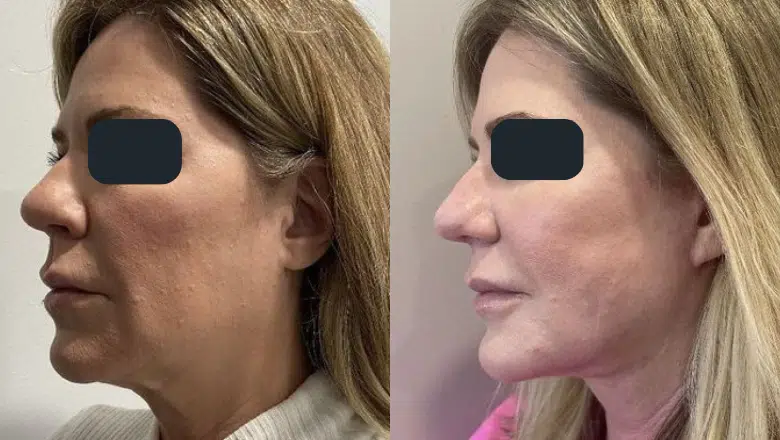
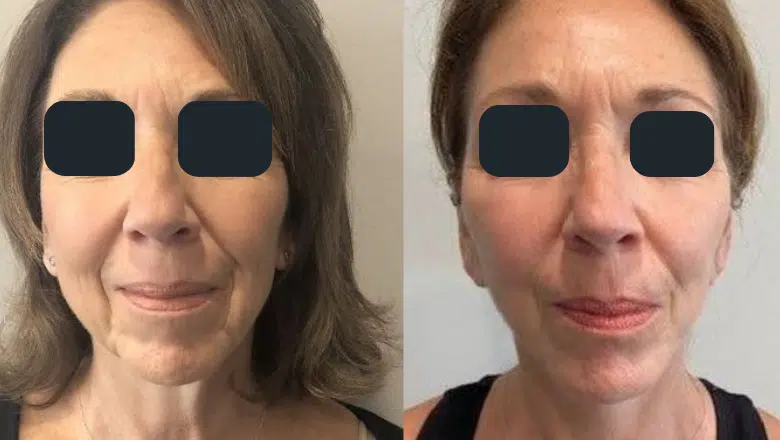

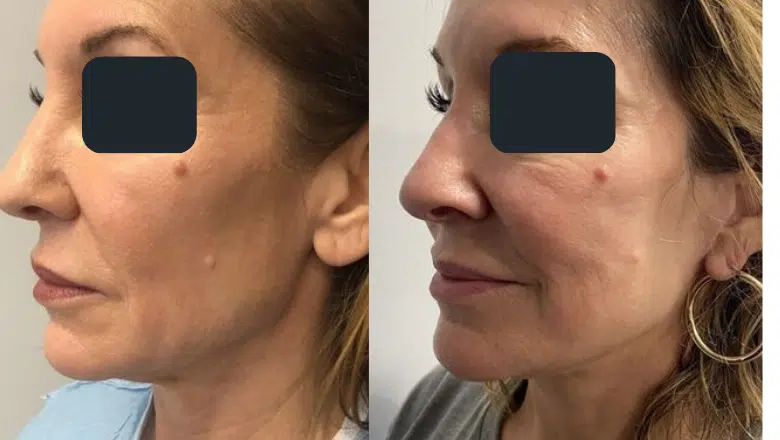
Five Benefits of a Mini Facelift Surgery
Deciding to undergo cosmetic surgery is a significant step towards enhancing one’s appearance and self-confidence. Among the various facial rejuvenation procedures available, the mini facelift stands out for its less invasive nature while offering substantial improvements. Here are five key benefits of choosing a mini facelift surgery:
Reduced Incisions and Minimised Recovery Time
One of the primary advantages of a mini facelift is the minimal surgical intervention required. This procedure necessitates fewer and smaller incisions, usually around the ears and along the hairline, compared to the more extensive cuts needed for a traditional facelift. This reduction in incisions not only contributes to a faster healing process but also significantly shortens the recovery period, allowing patients to return to their daily routines more quickly.
Lower Risk of Scarring
Given the smaller incisions involved in a mini facelift, patients benefit from reduced scarring. The strategic placement of these incisions around less visible areas like the ears and hairline further ensures that any potential scars are discreetly concealed. This aspect is particularly appealing to those concerned about the visible signs of undergoing facial surgery.
Noticeable Improvements to the Lower Face
Despite being less invasive, a mini facelift effectively addresses ageing signs in the lower face and neck area, such as sagging skin and jowls. The procedure tightens and lifts the skin, resulting in a more youthful and refreshed appearance. The improvements are visible and can rejuvenate the face without the need for a full facelift.
Cost-Effective Solution
The mini facelift is a more affordable option than its traditional counterpart, primarily because it targets specific areas of the face rather than the entire face and neck. This focus not only reduces the cost of the surgery but also makes it an attractive option for those looking for effective facial rejuvenation without the significant financial investment of a full facelift.
Quicker Recovery with Less Discomfort
Recovery from a mini facelift is notably quicker and accompanied by less discomfort compared to a full facelift. The less invasive nature of the procedure means that patients can expect a more comfortable post-operative experience, with reduced pain and swelling. This benefit is especially valuable for those concerned about the post-surgery recovery process and its impact on their daily lives.
What Age Should You Get a Mini Facelift?
There is no single perfect age for getting a mini facelift because every individual ages at a different pace. Genetics, lifestyle choices, sun exposure, and overall skin health all play a role in how soon visible signs of ageing appear. While some people start noticing sagging in their mid-face as early as their late 30s or early 40s, others may not experience significant changes until their 50s or even later.
A mini facelift is most effective for individuals who have mild to moderate sagging in the mid-face area, typically around the cheeks and jawline. It is particularly beneficial for those whose skin has begun to lose its youthful firmness but who still have a well-defined neck and brows that remain in a good position. Many people in their 40s and 50s find this procedure an excellent way to restore a fresher, more youthful appearance without the extensive surgery required for a full facelift. However, some patients in their 60s also undergo mini facelifts if their ageing process is more gradual and they are looking for subtle yet effective rejuvenation.
The best way to determine if a mini facelift is right for you is to have a consultation with an experienced plastic surgeon. They will assess your skin elasticity, facial structure, and overall suitability for the procedure. If your neck has significant sagging or loose skin, a more comprehensive facelift may be a better option. However, if your main concern is the descent of your mid-face and early jowl formation, a mini facelift can provide a refreshed and natural-looking result with less downtime compared to a full facelift.
What’s the difference between a mini-facelift and a traditional facelift?
A mini facelift differs from a full facelift in several key respects. A traditional facelift is designed to treat deeper wrinkles and skin folds affecting a broader area of the face. The procedure, therefore, needs longer incisions to remove sufficient amounts of sagging skin. One of the key differences is where the incisions are located for each type of procedure and how prominent they appear. With a mini lift, the incisions are positioned behind the ear and extend into the hairline, which is barely visible once healed. In the traditional facelift, the surgeon makes incisions both behind the air and in front of it, with the incision often extending into the scalp area.
A full facelift is much more invasive compared with a lower facelift. A lower facelift can be effectively combined with other facial rejuvenation treatments in the same procedure for a more overall improvement in the usefulness of the face. Many people may be increasingly prone to prominent scarring, and a mini facelift may be considered a better alternative to a full facelift due to the smaller length and concealed location of the incisions.
Mini facelift surgery is most commonly recommended for women and men in their 40s and above, as it is particularly effective in treating many of the early signs of ageing, including jowls and sagging skin. Traditional facelift surgery is better suited for patients aged in their mid-50s and over, as this is often the time when initial fine lines have now become deeper wrinkles and may be present even when the face is in a resting state of expression. A full facelift is also more effective for people who have significant laxity of the neck, and the procedure is often combined with a neck lift. Those who lose dramatic amounts of weight from successful dieting and exercise often develop loose and sagging skin in the face and neck area and a full facelift is a more suitable option for these types of patients for better correction of the signs of ageing.
A standard full facelift can often take well over five hours to carry out with patients, often requiring 2 to 3 nights of an inpatient stay in the hospital. Some facelifts may take longer, particularly the deep plane facelift. A mini facelift takes up to 2.5 hours to carry out, and patients often feel much more comfortable after the procedure with a quicker healing time.
Unlike traditional facelift surgery, which is routinely carried out under a general anaesthetic, mini facelift surgery can, in many cases, be performed under local anaesthetic and this can be supplemented with sedation if required as an outpatient procedure. This means the patient can recover at home later the same day. After this type of surgery, the majority of patients are able to recommence their everyday activities after one week. Full facelift surgery has a much longer recovery period, with many patients requiring at least two weeks and up to 4 weeks to recover from the procedure. Traditional facelift surgery involves a much greater degree of bruising and swelling, and this can last for a minimum of two weeks before beginning to improve. Any bruising and swelling after a mini facelift improves much faster, with most patients reporting a full resolution of the side effects in one week. At Centre for Surgery, our surgeons are experts in all facelift techniques.
The S Facelift or ‘S-lift’
This type of facelift involves incisions that resemble an S shape that starts in the hairline and extends to the back of the ear. Once the initial incision has been performed, the facelift surgeon delicately separates the skin from the underlying tissues, followed by the removal of excess skin and fat to optimise facial definition in the lower portion of the face and jawline.
SMAS Facelift
SMAS stands for superficial musculoaponeurotic system and is the fibromuscular layer of tissue beneath the skin which is surgically altered to tighten the neck and jawline for effective rejuvenation of the lower and middle part of the face. A SMAS facelift is ideal for getting rid of saggy skin, excess fat and prominent jowls affecting the jawline. The cheeks can also be enhanced as part of a cheek lift or mid-facelift which is often combined with a SMAS facelift.
Deep plane facelift
A deep plane facelift, also known as a subperiosteal facelift, is one of the traditional techniques of facelift surgery designed to produce long-lasting results. The dissection area is in the deeper layers of the face located between the underlying muscles and fat. The deeper soft tissues can be surgically manipulated to tighten the neck, enhance the volume of the cheeks and result in a more defined jawline and overall rejuvenated appearance.
All three of these facelift techniques focus on improving signs of facial ageing affecting the lower half of the face. They are commonly combined with other complementary facial procedures for comprehensive facial rejuvenation. Some of the most popular combinations include a brow lift for raising the outer third of the brow and enhancing the eye region. Eyelid surgery or blepharoplasty is an effective procedure to get rid of hooded eyelids and eyebags under the eyes. Drooping eyelids can be addressed with an eyelid lift.
The results of a mini facelift can be enhanced with non-surgical treatments, including anti-wrinkle injections to treat the upper part of the face and dermal fillers to add volume to parts of the face where it has been lost due to the ageing process.
Who is a good candidate for a mini-facelift?
A mini facelift is an ideal treatment for women and men aged over 40 who are unhappy with the obvious signs of ageing and loose skin located in the lower part of the face and neck and would like to have a treatment which is less invasive and carries fewer risks than a traditional facelift.
RELATED: Am I suitable for a mini facelift?
Surgeons at Centre for Surgery generally consider the following criteria when selecting patients for a mini-lift procedure in London:
- Over the age of 40
- Are in good physical and mental health with no chronic uncontrolled medical conditions
- Have obvious signs of ageing in the lower part of the face
- Have realistic expectations of what can be achieved with a lower facelift
- Prefer to have a less invasive procedure with less downtime compared with a full facelift
Is a Mini-Facelift or Full Facelift Right for You?
Mini-lifts are designed for individuals experiencing early signs of facial ageing who desire a rejuvenated and well-defined face and neck. A mini-lift may be an excellent choice for you if:
- You have mild to moderate wrinkles on the lower portion of your face.
- You have sagging cheeks and pronounced nasolabial folds (laugh lines).
- Jowls obscure your jawline.
- Your neck and chin skin is loose, affecting their contours.
- You have a double chin with excess, puffy skin.
If any of these issues resonate with you and you’re seeking a solution, a mini-lift may be the right choice. After a thorough evaluation, we will discuss your surgical options. We may recommend combining a mini-lift with other facial rejuvenation procedures, such as an eyelid lift or brow lift, to achieve optimal results.
How to prepare for a mini-facelift
Stop smoking
Smoking can affect the healing process and increase the risk of complications. It’s essential to stop smoking at least six weeks before your procedure to minimise these risks.
Medications and supplements
Some medications and supplements can increase the risk of bleeding during and after surgery. It’s essential to inform your surgeon of any medications and supplements you are taking and follow their instructions on whether or not to stop or adjust them before the procedure.
Hydration and nutrition
Staying hydrated and eating a healthy diet can help prepare your body for surgery and improve the healing process.
Arrange for postoperative care
You’ll need someone to drive you home after the procedure, and you may need someone to stay with you for the first night or two. It’s important to arrange for postoperative care to ensure a smooth recovery.
Follow preoperative instructions
Your surgeon will provide you with pre-operative instructions, which may include avoiding food and drink before the surgery, washing your face and hair before the procedure, and not wearing any makeup or jewellery to the clinic on the day of the procedure. Following these instructions carefully is essential to ensure a safe and successful outcome.
How is the mini facelift performed?
The mini facelift procedure involves making incisions well positioned in natural skin folds behind the ears and in the hairline. The scarring from mini facelift surgery is minimal, with most people being unable to see any visible scars as early as six weeks after the procedure. The surgeon surgically removes the areas of loose skin before trimming any excess fat and surgically repositioning the tissues to tighten the face. The skin incision is then closed with dissolvable stitches, followed by applying a sterile dressing.
For many patients, a mini facelift has emerged as the most effective technique for rejuvenating the lower part of the face. It has replaced the standard traditional facelift for this purpose. The procedure carries fewer risks and complications, has less scarring, is minimally invasive and takes no more than 2.5 hours to perform in most cases. Natural-looking results are better achieved with a mini facelift. The standard facelift has a higher risk of resulting in a ‘done look’. Advances in mini facelift surgery now allow the surgeon to address the deeper tissue layers of the face and not just the skin itself. Facelift techniques that focus on only tightening the skin are more likely to result in an artificial-looking result, with the facelift incisions looking more obvious to others.
Unlike a standard facelift, the mini facelift is easily carried out under a local anaesthetic despite being a surgical procedure and takes no more than two hours to perform. All types of mini facelift surgery are outpatient-based, which means you’ll be able to recover in the comfort of your own home later the same day and recommence your normal daily activities after the first week of recovery.
What to expect during recovery
Recovery from a mini-facelift can vary from patient to patient, but here are some general guidelines of what to expect:
Pain and discomfort
Mild pain and discomfort are common after a mini-facelift, but your surgeon will prescribe pain medication to help manage any discomfort.
Swelling and bruising
Swelling and bruising are normal after a mini-facelift and can last for several days or weeks. Applying cold compresses to the treated areas can help reduce swelling and bruising.
Bandages and dressings
Your surgeon may place bandages or dressings on the treated areas immediately after the procedure to help with healing. You may need to wear a compression garment or bandage for a few days or weeks to help reduce swelling and support the healing process.
Restrictions on activities
You will need to avoid strenuous activities, such as exercise and heavy lifting, for several weeks after the procedure. Your surgeon will provide you with specific instructions on when you can resume your normal activities.
Follow-up appointments
You will need to attend follow-up appointments with your surgeon to monitor your progress and ensure that you are healing properly. Your surgeon may remove any stitches or dressings during these appointments.
Results
While you may notice some immediate improvement in the treated areas, it can take several weeks or months for the final results of the mini-facelift to be visible. The results of a mini-facelift can last several years with proper care and maintenance.
Does a mini facelift cause visible scars?
Additionally, your surgeon will use meticulous techniques and precise suturing to ensure the incisions heal as seamlessly as possible. As a result, any scarring that does occur is likely to be very faint and will fade over time.
Risks of a mini facelift
Lower facelift surgery is considered very safe when performed by an expert surgeon. There are several common side effects which you may experience after the procedure, including:
- Bruising and swelling
- Temporary numbness
- Minimal scarring, which is barely visible
As with any type of surgical procedure, facelift surgery involves certain risks and complications which your surgeon will discuss at your consultation, including:
- Bleeding
- Wound infection
- Prominent scarring
- Haematoma formation
- Skin necrosis
- Hairline distortion or localised hair loss near the incisions
Can a mini-facelift be combined with other facial rejuvenation surgeries?
Yes, a mini-facelift can be combined with other facial rejuvenation surgeries to achieve more comprehensive results. Here are some of the procedures that can be combined with a mini-facelift:
Neck lift
A neck lift is a surgical procedure that removes excess skin and fat from the neck area. Combining a neck lift with a mini-facelift can improve the lower face and neck area more comprehensively.
Brow lift
A brow lift is a surgical procedure that lifts the eyebrows to create a more youthful and alert appearance. Combining a brow lift with a mini-facelift can help address sagging skin and wrinkles in the upper face.
Blepharoplasty
Blepharoplasty, or eyelid surgery, removes excess skin and fat from the eyelids to improve the appearance of sagging or puffy eyelids. Combining blepharoplasty with a mini-facelift can provide a more comprehensive rejuvenation of the entire face.
Facial fat transfer
Fat transfer, also known as fat grafting, involves removing fat from one area of the body and injecting it into the face to restore volume and improve facial contours. Combining fat transfer with a mini-facelift can improve the face more comprehensively by addressing both sagging skin and volume loss.
Mini Facelift London Cost & Prices – How much is Mini Face lift in London?
Several factors will determine the overall cost of your mini facelift procedure, and the final quotation will be given after your face-to-face consultation with your specialist plastic surgeon.
- A mini facelift alone or combined with facial fat grafting or another procedure such as eyelid surgery
- Primary or revision mini facelift
Why not call 0207 993 4849 and speak to one of our expert patient coordinators, who can give you a rough cost for a mini facelift if you wish to combine it with other procedures.
Remember that mini facelift prices should never be the determining factor when choosing the best clinic for mini facelift surgery. We feel that safety and quality of service should be your number one priority and instil in you the confidence that our team will look after you before, during and after your procedure to the best of their ability.
Spread the cost of your mini facelift procedure – from as little as £95 per month.

Centre for Surgery is fully approved to offer finance, including 0% finance, via our specialist finance partner, Chrysalis Finance. You no longer need to use your savings to pay for your treatment – you can apply to spread the cost of your procedure with Chrysalis Finance using their simple 1,2,3 application to pay for your procedure. Don’t wait until you have enough money for your treatment. Apply today and (subject to status) pay for your procedure easily in monthly instalments using one of their payment options. Chrysalis Finance is the only ethical provider focusing solely on providing specialist financing for medical procedures.
What is included in my treatment package?
- As many preoperative consultations with your surgeon as you like to make sure the procedure is right for you
- Treatment at our state-of-the-art Baker Street clinic in Marylebone central London.
- Enhanced same-day discharge with the added benefits of recovering in your own home
- 24/7 clinical support from your surgeon for the first 48 hours and our expert postoperative support team
- Your dedicated patient coordinator to act as a personal point of contact to guide you through your patient journey with us at Centre for Surgery
- In-depth preoperative medical assessment to make sure you are fully fit for the rhinoplasty procedure
- Exceptionally high standards of postoperative care described as ‘outstanding’ by the CQC with regular telephone and face-to-face checks by our expert postoperative support team
Is a Mini Facelift Worth It?
For many people, a mini facelift is absolutely worth it. With the growing popularity of non-surgical treatments such as fillers, skin tightening procedures, and thread lifts, some individuals find that these temporary solutions do not deliver the long-lasting results they were hoping for. While non-surgical treatments can provide subtle improvements, they often require repeated sessions, which can become costly over time. Many patients who have tried these alternatives later wish they had invested in a mini facelift from the start for more noticeable and lasting rejuvenation.
RELATED: Is a facelift worth it?
A mini facelift offers a natural yet significant improvement by lifting sagging skin in the mid-face and jawline. The results typically last several years, making it a more effective and cost-efficient solution compared to ongoing non-surgical treatments. Since the procedure is less invasive than a full facelift, the recovery time is shorter, and the scarring is minimal. Patients often report that they look refreshed and more youthful without the exaggerated or “pulled” look that can sometimes result from excessive filler use.
Why choose Centre for Surgery for mini facelift?
Centre for Surgery is a renowned plastic surgery clinic that specialises in a range of cosmetic procedures, including mini facelifts. Here are some reasons why you should choose Centre for Surgery for your mini facelift:
Expertise and experience
Our plastic surgeons have years of experience in performing mini facelifts and are experts in the latest techniques and technologies. They work closely with each patient to develop a personalised treatment plan that meets their unique needs and goals.
High patient satisfaction rates
Patient satisfaction is our top priority. We have a proven track record of achieving high patient satisfaction rates and are committed to ensuring that our patients are completely satisfied with their results.
State-of-the-art facilities
We operate from modern, state-of-the-art facilities that are equipped with the latest technology and equipment. Our facilities meet the highest standards of safety and hygiene, ensuring that our patients receive the best possible care.
Comprehensive aftercare
We provide comprehensive aftercare and support to all of our patients, ensuring that they have a smooth and comfortable recovery. Our team is always available to answer any questions or concerns that our patients may have.
Personalised treatment plans
We understand that every patient is unique and requires a personalised treatment plan that meets their specific needs and goals. Our plastic surgeons work closely with each patient to develop a treatment plan tailored to their needs.
FAQs
-
How Much Younger Can a Mini Facelift Make You Look?A mini facelift can rejuvenate your appearance by smoothing out sagging skin and restoring more youthful facial contours. On average, most people look around five to ten years younger after the procedure. However, the exact results vary depending on factors such as skin quality, the degree of ageing before surgery, and how well you care for your skin afterwards.
-
What are the benefits of a mini lift?The advanced surgical techniques for mini-facelift surgery result in patients taking over ten years off their age with natural-looking results. Compared with older facelift techniques, a mini facelift works deeper to reposition the underlying soft tissue compared with older techniques of only tightening the superficial skin.
The mini-lift procedure is performed as an outpatient at our surgical facility in central London. Both local anaesthetics and general anaesthetics can be used depending on individual preferences. The procedure takes no more than two hours to perform, and the incisions are most commonly positioned at the back of the ear and extend into the hairline. Mini facelift surgery is often combined with other facial procedures, including eyelid surgery, browlift or a neck lift depending on what you are trying to achieve. -
What’s the difference between a mini facelift and a full facelift?The difference between a mini facelift and a full facelift largely depends on the approach of the surgeon, as there is no single universal definition. Different surgeons have their own methods and classifications for these procedures.
At our clinic, we define a full facelift as a comprehensive lift that addresses the mid-face, jawline, and neck. This procedure is more extensive and is often considered a combination of a lower facelift and a neck lift. Some surgeons include a brow lift as part of a full facelift, while others treat it as a separate procedure. The goal of a full facelift is to provide significant rejuvenation by tightening sagging skin, repositioning deeper tissues, and creating a more youthful overall facial structure.
A mini facelift, on the other hand, is a more targeted procedure designed to refresh the middle part of the face. It primarily focuses on lifting the cheeks, nasolabial folds, marionette lines, and jawline but does not include the neck. This makes it a less invasive option with a shorter incision and a much quicker recovery time. A mini facelift is ideal for individuals with early signs of ageing who want a subtle yet noticeable improvement without undergoing a full surgical facelift. -
At what age should you get a mini face lift? There is no specific age requirement for a mini facelift, as the appropriate timing varies depending on individual factors such as genetics, lifestyle, and skin quality. Generally, patients considering a mini facelift are in their 40s to early 60s and exhibit early signs of facial ageing. The best approach is to consult a certified plastic surgeon who can evaluate your unique situation and determine if a mini facelift suits you.
-
Can You Have a Facelift During a Lunch Break or Over a Weekend?Despite some claims, it's important to understand that a Mini Facelift is a significant surgical procedure and cannot be completed during a lunch break or fully recovered from over a weekend. These "lunch-break" or "weekend" Facelifts, as some might call them, are not realistic representations of the procedure or its recovery time. If you encounter such offers, it's crucial to ensure that both you and your surgeon have a mutual understanding of what the procedure entails and the recovery time required.
-
Am I suitable for a mini facelift?The mini facelift procedure is designed to improve facial rejuvenation with minimal risk of risks, complications and less downtime compared to a full facelift. Although mini facelifts can be suitable for most patients, it is ideally suited for younger individuals with early to moderate signs of ageing. Ideal candidates often find they cannot accept the ageing facial changes but are not ready to commit to a more major facelift and neck lift. Centre for Surgery also offers a full range of non-surgical treatments such as injectables, chemical peels and laser treatment to reduce the need for early surgical intervention. In the past, it was often the case that patients had a limited number of treatment options for facial ageing, with most being quite invasive, including a full facelift. The results of a traditional facelift can be awe-inspiring and often reduce or even eliminate the need for further surgical treatment. In the last five years, patients are now unable or unwilling to undergo major surgery as a first-line option and prefer less invasive treatment. A mini facelift should be viewed as part of a combination treatment approach and is routinely combined with facial fat grafting to tackle volume loss and laser skin tightening for enhancing tissue tightness and skin quality. Using skin resurfacing treatments such as fractional laser resurfacing or chemical peels is an excellent complement to surgical treatment. Speak to one of our highly knowledgeable patient coordinators to learn more about our anti-ageing treatments.
-
Is a mini facelift major surgery? A mini facelift is not classified as major surgery, but it is still a surgical procedure that requires proper planning and recovery. While people may have different ideas of what "major surgery" means, a mini facelift is nowhere near as invasive as operations like heart or abdominal surgery. However, because it involves incisions and tissue repositioning, it is not something to take lightly.
Although less extensive than a full facelift, a mini facelift still requires a short period of downtime. You’ll need to allow yourself time to rest and heal properly. Taking a few days off work and avoiding strenuous activities is essential to ensure a smooth recovery. If you have young children or a busy schedule, you’ll want to arrange for some support so that you’re not rushing around too soon after the procedure.
The good news is that most patients feel quite well within just a few days. Many report only mild discomfort and are able to resume light daily activities quickly. By the end of the first week, most of the swelling and bruising has improved significantly, and people are usually comfortable returning to work and social events. The procedure itself can be performed under general anaesthesia, IV sedation, or even local anaesthesia in some cases, depending on the patient's needs and the surgeon’s approach. -
Which Facelift Procedure Is Best Suited for Me?Choosing the right type of Facelift depends on your individual situation. A less invasive Facelift, like a Mini Facelift, is generally suitable for patients with minimal signs of aging. In contrast, a Full or SMAS Facelift is more appropriate for those with more pronounced aging signs, such as saggy skin in the mid-face area or heavy jowls. Consulting with a qualified surgeon at Centre for Surgery will help determine the best approach for your unique needs.
-
Does a mini face lift address the neck?A mini facelift primarily targets the lower half of the face, focusing on areas such as the cheeks, jawline, and jowls. While it may provide some improvement to the neck area, particularly the upper neck, it is not specifically designed to address significant sagging or laxity in the neck. For more comprehensive neck rejuvenation, a neck lift or full facelift may be recommended in combination with the mini facelift.
-
Does a mini face lift look natural?When performed by a skilled and experienced plastic surgeon, a mini facelift can produce natural-looking results. The procedure aims to provide subtle enhancements and restore a more youthful appearance without drastically altering one's facial features. To ensure a natural outcome, it is essential to select a reputable surgeon with a proven track record of successful mini facelift procedures.
-
What can I expect after having a mini facelift procedure?Once you have had a lower facelift, you will be required to attend for a postoperative check-up with one of our post-operative nursing team at one week. At this appointment, your dressings will be removed and the incision site will be inspected to make sure there are no signs of infection.
Your surgeon will see you six weeks after your procedure to review the results of your procedure and to make sure your recovery process is progressing as planned. Suggestions to improve the appearance of your mini facelift scars will be provided including silicone gel sheets. Throughout your mini facelift recovery, you will be able to get in touch with our post-operative nursing team at any time if you have any questions or concerns. We believe it is important to make you feel as well supported as possible during your recovery as this will contribute to achieving the very best results. -
How Long Does Swelling Last After a Mini Facelift?Post-operative swelling is a common aspect of the healing process following a mini facelift. Initially, you can expect significant swelling, which may intensify slightly before it starts to subside. The first week post-surgery is when swelling is most noticeable, with a significant reduction typically occurring within two weeks. However, it's important to be patient, as complete resolution of swelling can take a few months. Following your surgeon's post-operative care instructions diligently can aid in reducing swelling and facilitating a smoother recovery.
-
How Long Does It Take To Heal From A Mini FaceliftHealing from a mini facelift is generally much quicker than a full facelift, making it a popular choice for those looking for facial rejuvenation with minimal downtime. Most people find that they feel comfortable resuming work and social activities within a week, though some minor swelling and bruising may still be present. While everyone’s healing process is slightly different, the overall recovery is usually straightforward and far less demanding than many expect.
During the first few days after the procedure, you may experience mild discomfort, tightness, and some swelling around the treated areas. These effects are completely normal and usually improve quickly. By the end of the first week, much of the swelling subsides, and any residual bruising can often be covered with makeup. The small incisions used for the mini facelift heal well and are usually placed in natural creases around the ears, making them discreet and barely noticeable as they fade over time.
Although you may look and feel much better within a week, full healing continues beneath the surface for several weeks. Your results will continue to improve over the following months as any remaining swelling fully settles and your skin adjusts to its newly lifted position. Most people find that they can return to light exercise after two weeks, but more strenuous activities should be avoided for about four to six weeks to allow for complete recovery. -
What is the Recovery Time for a Mini Facelift?One of the advantages of a mini facelift is its relatively short recovery period, especially when compared to a traditional facelift. Most individuals find that they can resume their normal daily activities within one to three weeks after the procedure. It's worth noting that recovery experiences can vary based on individual healing processes and the extent of the surgery performed. To ensure the best possible recovery, it's crucial to follow all post-operative care instructions provided by your surgeon.
-
How Noticeable Is the Scarring from a Mini Facelift?Scarring from a Mini Facelift is generally less visible compared to that from a traditional Facelift. The incisions are carefully placed in skin folds near and around the ear to minimise their visibility. As with any surgical procedure, the visibility of scars can vary from person to person, but the design of the Mini Facelift aims to reduce their prominence.
-
How Long Do the Results of a Mini Facelift Last?The enduring nature of the results from a mini facelift is one of the key benefits of this procedure. Generally, you can expect the outcomes to last up to 10 years. Unlike some non-surgical treatments that require regular maintenance, a mini facelift offers a more long-term solution to signs of ageing. However, it's important to remember that while the procedure can significantly rejuvenate your appearance, it doesn't halt the ageing process. A healthy lifestyle, including good skincare habits and maintaining a stable weight, can complement the effects of your mini facelift and help in prolonging its benefits.
-
Are the Results of a Mini Facelift Permanent?While the results of a Mini Facelift can be long-lasting, typically up to 8-10 years, they are not permanent. The natural aging process continues, and over time, you may find that further facelift procedures are required to maintain your desired appearance.
-
Is Combining a Mini Facelift with Other Facial Surgeries Possible?Yes, it is possible to combine a Mini Facelift with other facial surgeries. To determine the best combination of procedures for your specific situation, it's advisable to contact us and schedule a consultation. This will allow for a tailored approach to your facial rejuvenation needs.
-
Is a Mini Facelift Cheaper Than a Traditional Facelift?The cost difference between a Mini Facelift and a traditional Facelift varies depending on the individual needs of each patient. The extent of surgical work required can significantly influence the overall price. Generally, a Mini Facelift might be less costly due to its less extensive nature, but this is not always the case. It's essential to consider the specific details of your case to get a clearer idea of the potential costs involved.
-
How can I lift my face without surgery?There are several non-surgical options for facial rejuvenation that can provide subtle lifting and tightening effects. These include:
Dermal fillers: Injectable fillers can add volume and lift to specific areas of the face, such as the cheeks, temples, or nasolabial folds.
Anti wrinkle injections: This injectable treatment can help relax facial muscles, reducing the appearance of wrinkles and providing a subtle lift.
Ultherapy: This non-invasive procedure uses ultrasound energy to stimulate collagen production, tightening and lifting the skin over time.
Radiofrequency treatments: These treatments use radiofrequency energy to heat the skin's deeper layers, promoting collagen production and resulting in a tighter, more youthful appearance.
Microneedling: This procedure involves creating micro-injuries in the skin, stimulating collagen production and improving skin texture and firmness.
While these non-surgical options can provide some improvement, their results are typically less dramatic and long-lasting than those of surgical procedures like a mini facelift.
What To Expect
Consultation
We recommend booking a consultation with an expert surgeon to discuss the benefits of a mini facelift. We would recommend using the consultation to discuss your needs and preferences and what you hope to achieve and your surgeon will be making your determination on your suitability for the procedure. The treatment options will be discussed with you, and the surgeon will make their professional recommendation on the procedure which is most likely to achieve your goals. The surgeon will then carry out a physical examination, including a detailed facial analysis, to map your anatomy in detail. Standardised clinical photos will then be taken from several angles. We would recommend patients bring a list of questions to the consultation and typical questions you may wish to ask include:
- Am I suitable?
- Are my expectations realistic?
- can I view before and after photos of similar patients?
- Is there anything I could do to get the best results?
- What is the recovery period like, and will I be supported?
- What types of scars can I expect?
- Is a mini facelift painful?
- When can I go back to work after the procedure?
Once the most appropriate surgical option has been decided, the potential risks and complications will be discussed, including how to manage them if they were to occur. You will also be advised on what the postoperative recovery period involves. The surgeon will take a full medical history, including any previous operations you may have had. What medication you are taking and whether you have any allergies will also be enquired about. This information will be used to determine your fitness for the procedure.
Before your surgery
Once you have decided to move forward with mini facelift surgery, our preoperative nursing team will send you the procedure information pack, which will include the following items which must be adhered to minimise the risk of complications:
- We recommend you stop smoking at least six weeks before the procedure as people who smoke have a higher risk of wound complications and infection.
- You should avoid any medications which contain aspirin as these increase the risk of bleeding during or after the procedure
- Preoperative fasting requirements mandate you must stop eating six hours prior to surgery, and you may have small sips of clear fluids up to 2 hours before your admission time. Clear fluids include still water, black tea and black coffee.
Surgery day
Please arrive for your procedure at the allocated time to ensure a smooth admission process. One of our admission nurses will get you changed into clinic clothing and measure your vital signs including your blood pressure.
You will then be seen by your anaesthetist, who will review your medical history, and finally, your surgeon will see you and mark the areas for the procedure.
A mini facelift is an advanced facelift technique with less tissue disruption which means a quicker procedure lasting no more than two hours. There are several variants of a mini facelift, and your surgeon will select the correct technique customised to your anatomy. Sometimes, the mini facelift may be combined with facial fat grafting for volume enhancement.
The procedure involves incisions being made behind the ear followed by surgical alteration of the underlying deeper tissues to reposition them to a level which tightens the lower face. Once any loose skin has been removed, the surgeon will close the incisions with dissolvable stitches, followed by the application of a sterile dressing.
After the surgery
Once the procedure is complete, you will be transferred to our recovery suite where you will be resting whilst the effects of the anaesthetic wear off. Once you have commenced eating and drinking and been to the toilet, our discharge nurses will discuss the post-operative instructions with your adult carer. You will be allowed to go home with your adult escort, who must look after you for the first 24 hours after surgery.
It is normal to have mild discomfort in the early postoperative period, but this will settle down very quickly, and any pain can be well controlled with over-the-counter painkillers. Mini-lift recovery is generally rapid with any bruising and swelling subsiding over a few days. Most patients can return to normal activities after one week. We recommend taking one week off work and more if you have a strenuous work occupation. You should avoid direct sunlight exposure for at least four weeks, which can result in excessive scarring. Avoid lifting heavy items and take it easy for the first couple of weeks after surgery and try not to allow knock your face.
You will be reviewed by one of our post-operative nurses one week after your procedure to review the incision site and expert advice on optimising the appearance of your scars will be given over the first six weeks. Mini facelift results are generally visible after six weeks have passed. Further improvements in the results can be seen over the next three months. Your surgeon will review you at our Baker Street clinic six weeks after your procedure.




